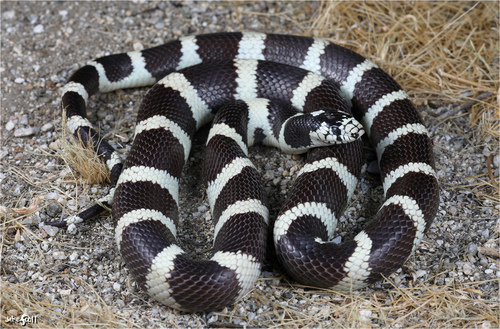
California Kingsnake
The California kingsnake, with its striking black and white bands, is a master of adaptation, thriving in diverse habitats. Known for its unusual diet, this nonvenomous snake preys on other snakes, including venomous ones, highlighting its fascinating ecological role as both predator and survivor.
Low
Aggression
Least Concern
Conservation Status
Stable
Population Trend
Characteristics
Lampropeltis californiae, commonly known as the California kingsnake, is a nonvenomous colubrid found in a variety of habitats, including deserts and forests across the western United States. Renowned for its striking black and white banding, it exhibits remarkable adaptability and is known for its ability to feed on other snakes, including venomous species.
Distribution Range of the California Kingsnake
Lampropeltis californiae, commonly known as the California kingsnake, is native to the western United States and northern Mexico. Its geographical distribution includes states such as California, Nevada, Arizona, Utah, Oregon, and parts of Baja California and Sonora in Mexico.
California Kingsnake's Habitat
Environmental Conditions
The California kingsnake is highly adaptable and can be found in a variety of environmental conditions. It inhabits desert regions, grasslands, woodlands, and even coastal areas. The climate in these areas can range from arid and semi-arid to more temperate conditions, depending on the specific location.
Ecological Niche
Lampropeltis californiae occupies a diverse ecological niche, often being found in areas with abundant ground cover such as rocks, logs, and vegetation that provide shelter and hunting grounds. This species is known for its opportunistic diet, preying on a wide range of animals, including rodents, birds, and other reptiles, which allows it to thrive in various habitats.
Copyright @ Nature Style Limited. All Rights Reserved.
 English
English